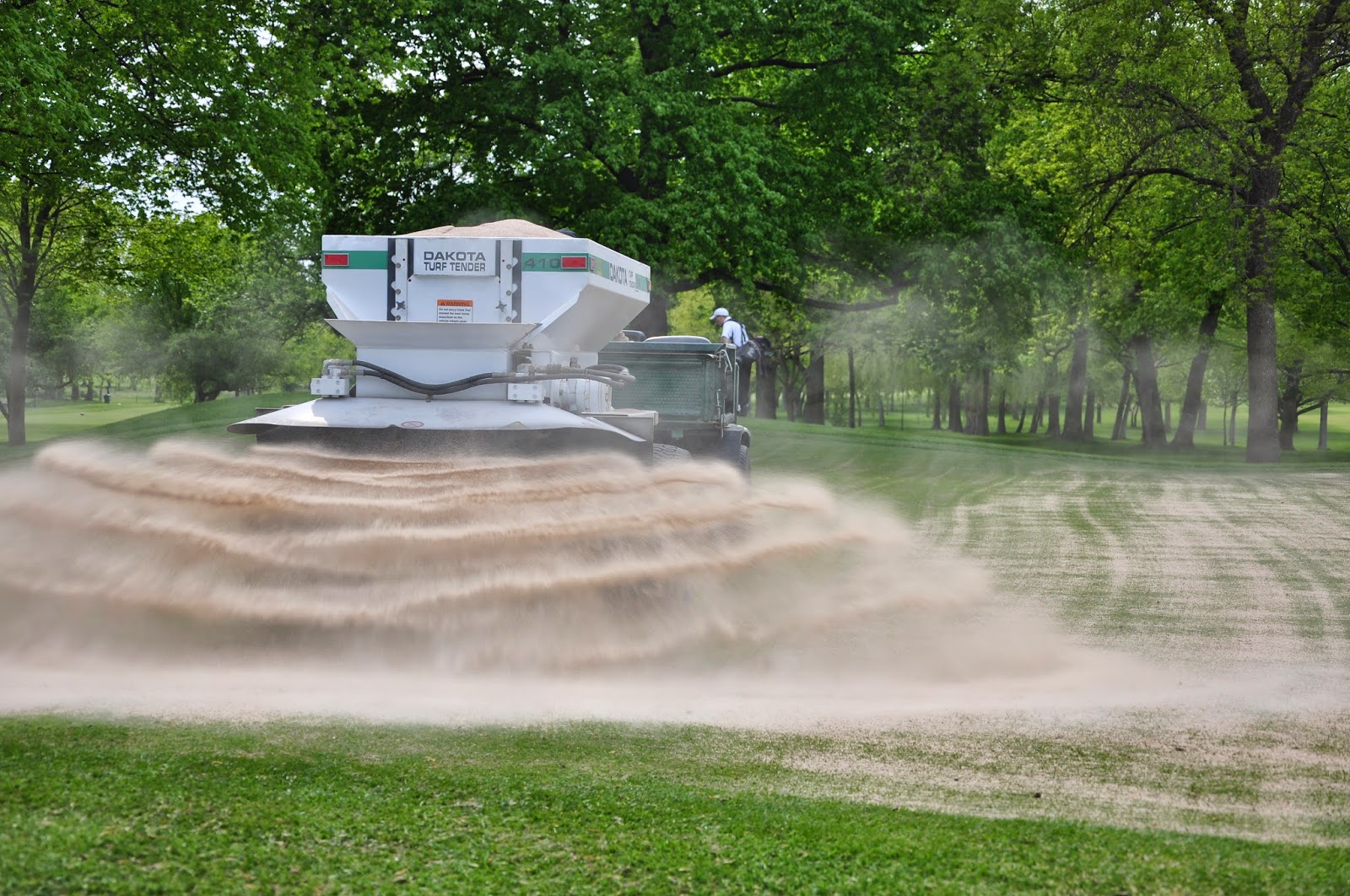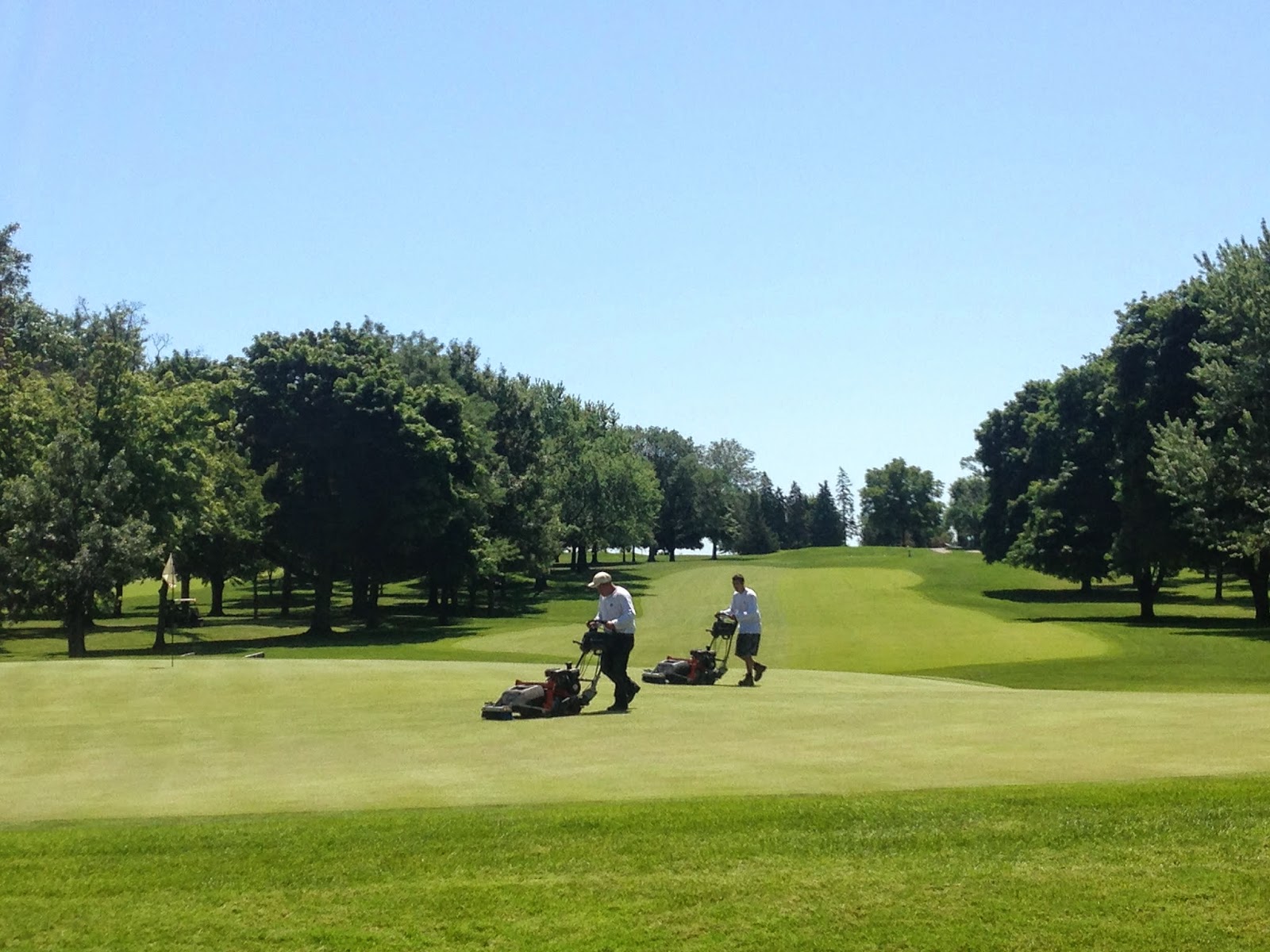Spring Aeration
This is one of my most and least favorite topics to write about through the year. Aeration. We Superintendents love it and Golfers hate it. While the two opposing views are on exact opposite ends of the spectrum, we do find a middle ground where we can adjust what we do to help ensure the least amount of disturbance while accomplishing our playing surface's needs. Our aeration dates are Monday, May 5th and Tuesday May 6th. Please remember to call Molly to sign up for our first Walk the Course on May 6th at 4:30 PM with Christina Honold and myself to talk personal fitness and aeration. It will be a great opportunity to see this process in action and ask questions along the way.
What we have done for the last four years is to simply punch a hole in the green with a solid tine and backfill the hole with sand. This provides air to the roots, sand to the profile to dilute organic matter and firm the surface, improved water and nutrient infiltration. We choose not to pull cores out of greens for a couple reasons the most important being minimal disturbance. Creating voids in the surface by removing a plug creates a greater opportunity for Poa annua (annual bluegrass) to invade our greens. Poa is a very opportunistic plant and can establish itself in areas that do not recover quickly. This method favors bentgrass establishment and lends itself well to our management philosophy. Not pulling cores out of the ground also reduces labor in removal of cores by hand or machine.
Once sand is incorporated into the holes, all greens will be over seeded with bentgrass to further encourage its establishment. Areas that have been set back by winter injury will receive some extra dimpling to encourage recovery. Fortunately for us the weather seems to be turning around over the next week or so and will help heal greens from aeration and injury.
 |
| The first step is to spread a heavy layer of sand on the green. |
What we have done for the last four years is to simply punch a hole in the green with a solid tine and backfill the hole with sand. This provides air to the roots, sand to the profile to dilute organic matter and firm the surface, improved water and nutrient infiltration. We choose not to pull cores out of greens for a couple reasons the most important being minimal disturbance. Creating voids in the surface by removing a plug creates a greater opportunity for Poa annua (annual bluegrass) to invade our greens. Poa is a very opportunistic plant and can establish itself in areas that do not recover quickly. This method favors bentgrass establishment and lends itself well to our management philosophy. Not pulling cores out of the ground also reduces labor in removal of cores by hand or machine.
Once sand is incorporated into the holes, all greens will be over seeded with bentgrass to further encourage its establishment. Areas that have been set back by winter injury will receive some extra dimpling to encourage recovery. Fortunately for us the weather seems to be turning around over the next week or so and will help heal greens from aeration and injury.
 |
| These large holes allow us to incorporate a lot of sand into the greens. |

Comments
Post a Comment